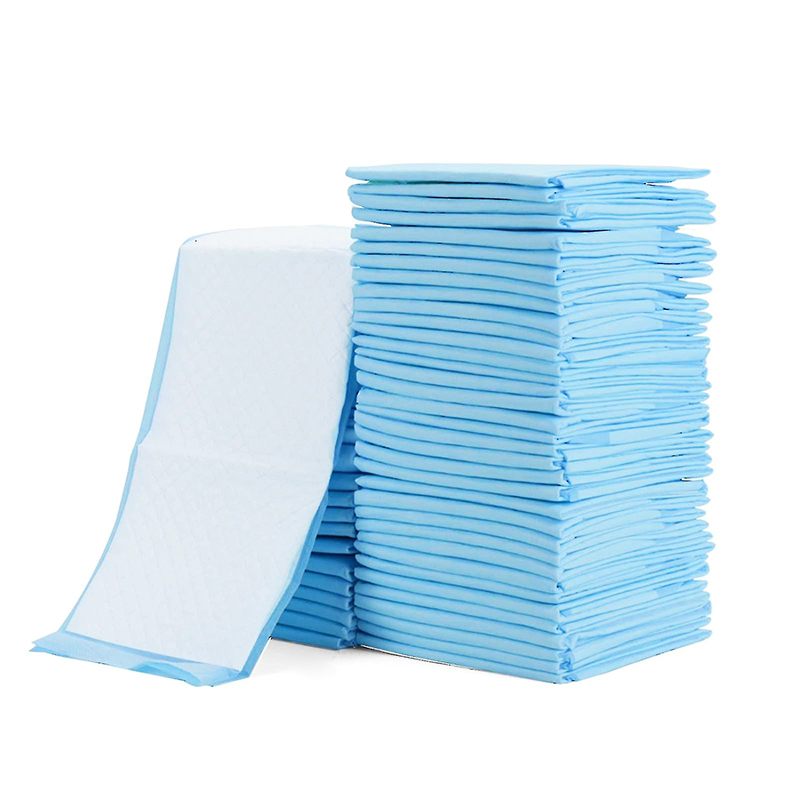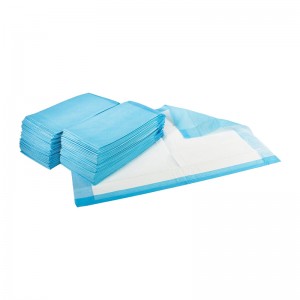Underpad
1. Preparation:
Ensure the surface where the underpad will be placed is clean and dry.
2. Placement:
Remove the underpad from its packaging. Unfold it completely.
Position the underpad on the bed, chair, or any surface requiring protection, with the absorbent side facing up.
If using on a bed, ensure the underpad is placed under the patient’s hips and torso for maximum coverage.
3. Securing the Underpad:
Smooth out any wrinkles or folds to ensure the underpad lies flat and covers the necessary area.
Some underpads have adhesive strips; if applicable, use these to secure the underpad in place.
4. After Use:
When the underpad is soiled, carefully fold or roll it inward to contain any liquid.
Dispose of the underpad in accordance with local waste disposal regulations.
Hospitals:
Used to protect hospital beds and examination tables, ensuring a clean and hygienic environment for patients.
Nursing Homes:
Essential in long-term care facilities to protect bedding and furniture from incontinence issues.
Home Care:
Ideal for home use, providing comfort and protection for bedridden patients or those with mobility issues.
Pediatric Care:
Useful for diaper changing stations and cribs, keeping babies dry and comfortable.
Pet Care:
Effective for use in pet beds or during travel to manage pet accidents and maintain cleanliness.
Post-Operative Care:
Used to protect surfaces and keep the post-surgical area dry, aiding in faster recovery.
Emergency Services:
Handy in ambulances and emergency response settings for quick and effective surface protection.
An underpad is used to protect beds, chairs, and other surfaces from liquid contamination. It serves as a barrier to absorb moisture and prevent leaks, keeping surfaces clean and dry. Underpads are commonly used in healthcare settings, such as hospitals and nursing homes, as well as in home care, to manage incontinence, protect bedding during post-operative care, and maintain hygiene for infants and pets.
The intended use of an underpad is to absorb and contain bodily fluids, preventing them from soiling beds, furniture, or other surfaces. They are designed to provide a hygienic solution for individuals with incontinence, bedridden patients, post-surgical recovery, and any situation where liquid spills need to be controlled. They are also used for diaper changing stations and pet care.
Underpads, also known as bed pads or incontinence pads, are protective, absorbent pads placed on surfaces to manage and contain liquid spills. They are typically made of multiple layers, including a soft top layer for comfort, an absorbent core to trap liquids, and a waterproof backing to prevent leaks. Underpads help maintain cleanliness and hygiene in various settings, particularly in healthcare and home care environments.
We need to put a bed pad to protect mattresses and furniture from liquid damage caused by incontinence, spills, or other fluid accidents. Bed pads help maintain a clean and hygienic environment by absorbing and containing liquids, thereby preventing stains, odors, and potential skin irritation for the user. They provide comfort and peace of mind for both caregivers and individuals who require assistance with mobility or continence management.





